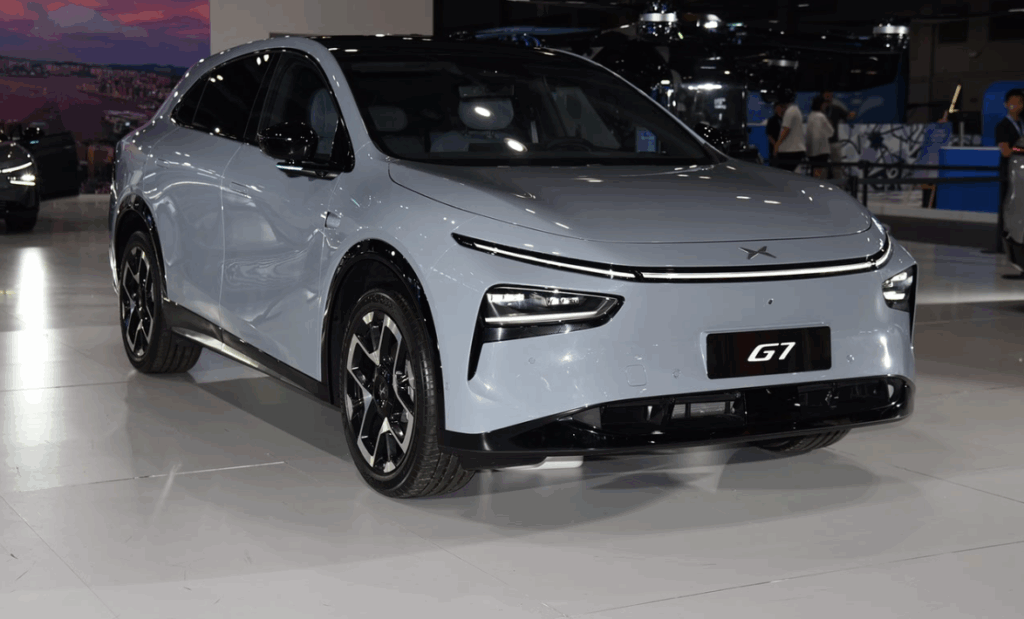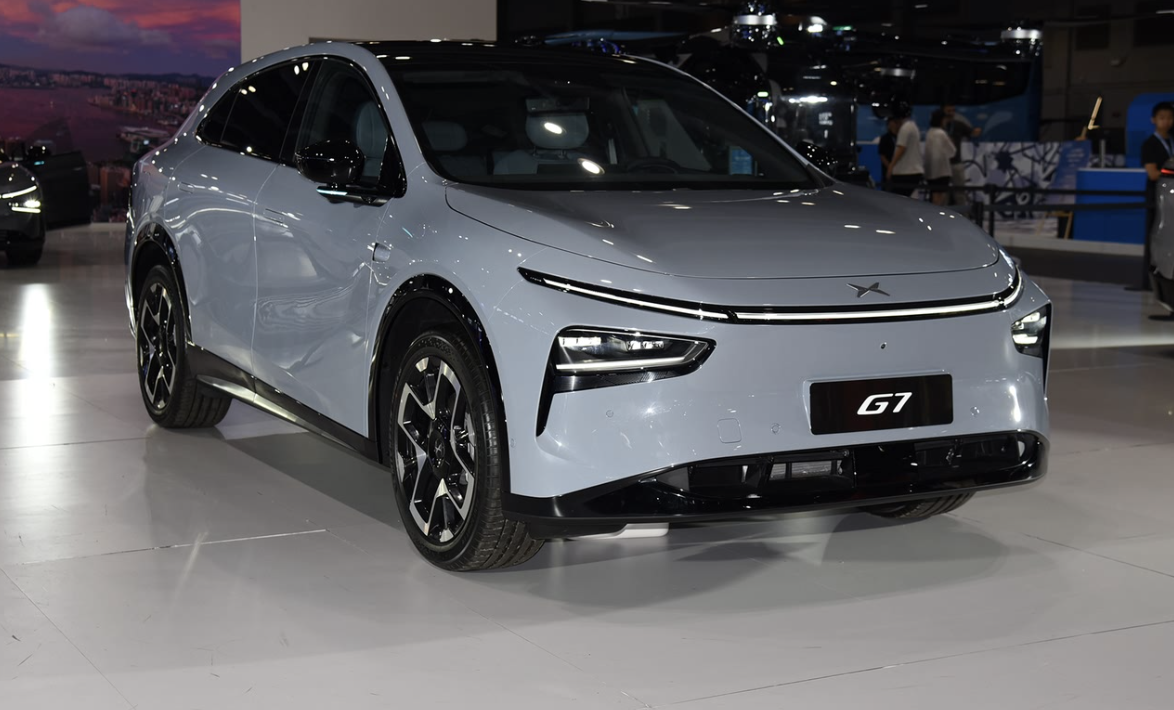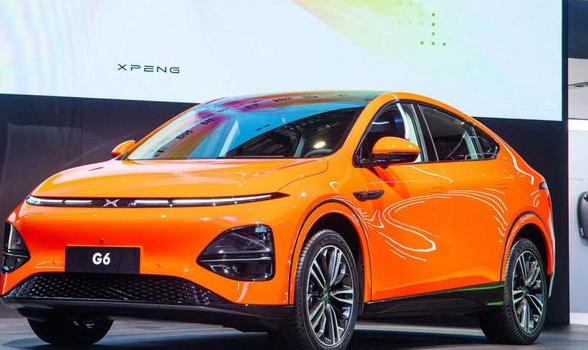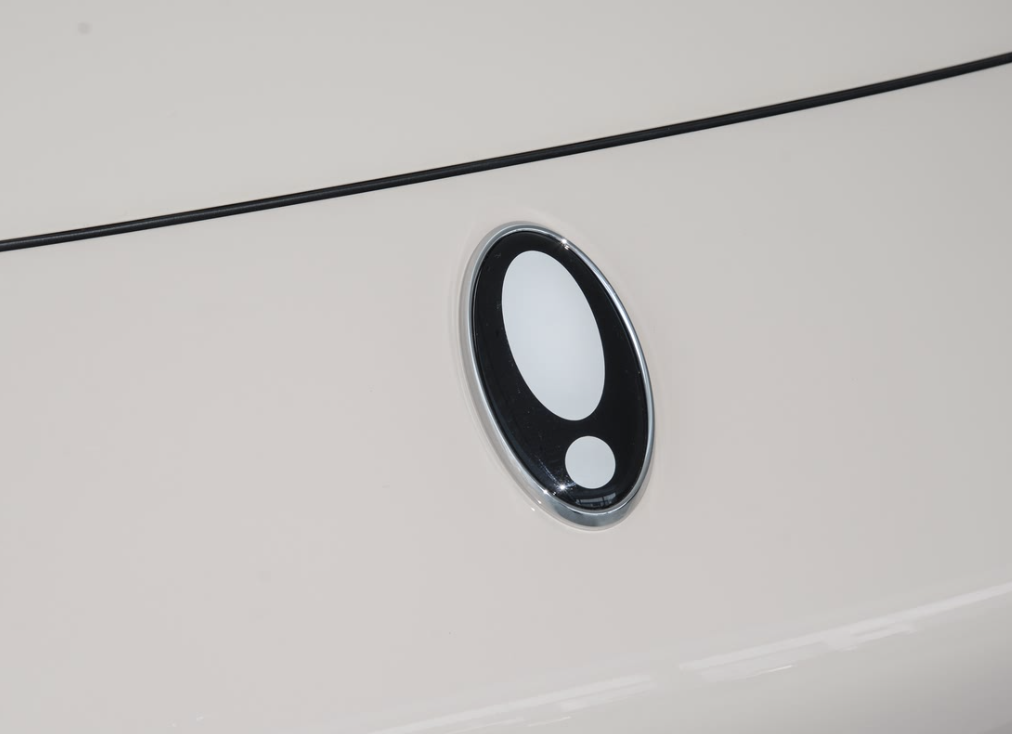On July 3, Xpeng Motors officially launched its new mid-sized SUV, the Xpeng G7. The vehicle is available in two versions: Max and Ultra, priced at ¥199,800, ¥205,800, and ¥225,800, ($27,373
$28,181 $30,905).respectively. The Xpeng G7 is positioned as a fully electric mid-sized SUV, and Xpeng Motors claims it is the world’s first L3-level AI car, with over 2000+ TOPS of computing power and the VLA+VLM model at the vehicle’s end. The Ultra version comes with 3 Turing AI chips, while the Max version is equipped with 2 Nvidia Orin X chips. All models feature a CLTC range of 702 km.

In terms of exterior design, the Xpeng G7 adopts the same design language as the Xpeng P7+, merging a continuous LED light strip with a split headlight. The upper part features an arched LED light strip, while the lower part integrates the headlights and air ducts. The overall look is sharp and sporty. The vehicle is also equipped with large blackened air intakes at the front, enhancing its sporty appearance. According to Xpeng Motors, the G7 is available in six colors: Star Day Gray, New Moon Silver, Starry White, Night Black, Cloud White, and Interstellar Green.
On the side, the G7 features hidden door handles and new-style wheel rims. Its dimensions are 4892mm in length, 1925mm in width, and 1655mm in height, with a wheelbase of 2890mm. It adopts a 5-seat layout. For comparison, the current Xpeng G6 measures 4758mm in length, 1920mm in width, and 1650mm in height, with the same 2890mm wheelbase. Apart from the identical wheelbase, the G7 outperforms the G6 in other dimensions. At the rear, the G7 features trapezoidal, continuous tail lights, with the light strip extending to the tailgate.
Inside, the Xpeng G7 adopts a minimalist style with extensive use of soft materials, accented with wood and satin metal. It offers four interior color options: Mystic Blue, Warm Sun Orange, Elegant Gray, and Deep Space Gray. Unlike other current Xpeng models, the G7 removes the traditional LCD instrument panel. Instead, driving-related information is displayed via the “Chasing Light Panoramic” heads-up display system, developed in collaboration with Huawei. It is equipped with a 15.6-inch floating central screen, a streaming rearview mirror, an 8-inch rear-seat entertainment screen, 256-color ambient lighting, and a 2.17-square-meter panoramic sunroof.
The “Chasing Light Panoramic” HUD system features full-scene AR lane-level navigation. With an 87-inch super-large display and 1800:1 contrast ratio, it provides full-scene AR lane-level navigation, parking guidance, narrow road imaging, and more. It covers 8 driving scenarios and can display vehicle range, driving assistance status, speed limits, driving lines, speed, navigation, and other related information. Additionally, the system uses a light carpet to display AR-HUD navigation, drawing navigation routes on real roads and offering guidance for complex intersections, lane changes on solid lines, bus lane changes, traffic light stops, lane change waiting, lane overtaking, narrow road assistance, “ghost head” warnings, and side/rear warnings.
AI is a key focus of the Xpeng G7, which is equipped with 3 self-developed Turing AI chips with a total computing power exceeding 2200 TOPS. For comparison, the NIO ET7 has 4 Nvidia Orin X chips, totaling 1016 TOPS. The NIO ET9 uses two self-developed NX9031 chips, with a total computing power of 2000 TOPS. The Li Auto L9 Ultra uses Nvidia Thor-U chips with a total computing power of 700 TOPS.
In simple terms, the high-computing-power chips quickly process massive amounts of data, such as autonomous driving systems that need to analyze sensor information and make decisions in milliseconds. The Xpeng G7 can simultaneously process information from cameras, radars, LiDARs, ultrasound sensors, navigation maps, and more, continuously receiving data from sensors, integrating and analyzing it in real-time, and making accurate, quick decisions.
Moreover, the G7 features the VLA+VLM large model, with the former driving the assisted driving system and the latter helping the cabin better understand the passengers’ intentions. Xpeng Motors believes the G7 is an L3-level AI car, with both 2000+ TOPS of effective computing power and the vehicle-end VLA+VLM model being indispensable.
In terms of power, the Xpeng G7 is equipped with a single motor, model TZ230XY01F30B, with a maximum power of 218 kW. It is paired with a lithium iron phosphate battery from CATL, and all models offer a pure electric range of 702 km. Additionally, all models come standard with DCC shock absorbers and Taiji hydraulic bushings, and the debut of AI slope control and cornering control enhances the driving experience.
Regarding market positioning, the Xpeng G7 will compete with the Tesla Model Y, Zeekr 7X, Avita 07, and the newly launched Xiaomi YU7. Especially with the Xiaomi YU7, which saw a massive response upon its launch, securing over 240,000 orders in just 18 hours. Thus, while the Xpeng G7 has strong product power and will compete alongside the Xpeng G6 in the pure electric mid-size SUV market, the fierce market competition adds uncertainty to its eventual market performance.
In addition to the Xpeng G7, Xpeng will also launch a luxury sports sedan in the 300,000 RMB range—the all-new P7—during the third quarter. Currently, Xpeng Motors has five models on sale, including the P7, P7+, MONA M03, G6, G9, and X9. Data shows that in the first half of 2025, Xpeng Motors delivered 197,200 new cars, surpassing last year’s total delivery volume.



